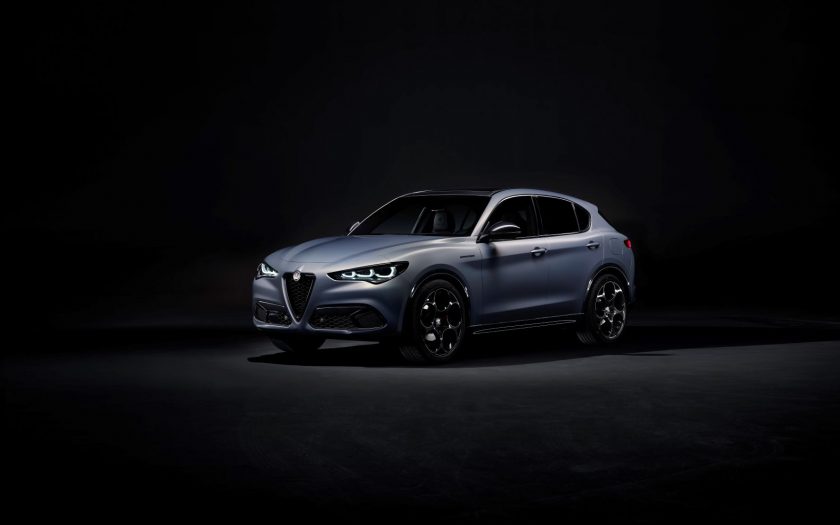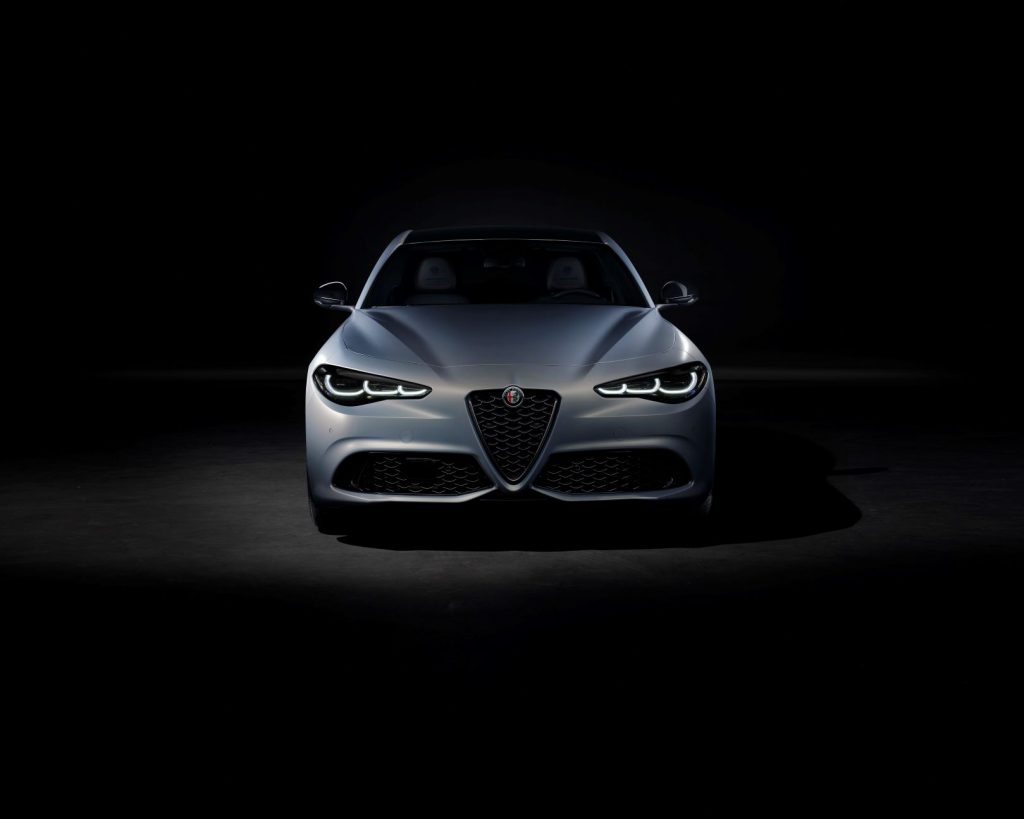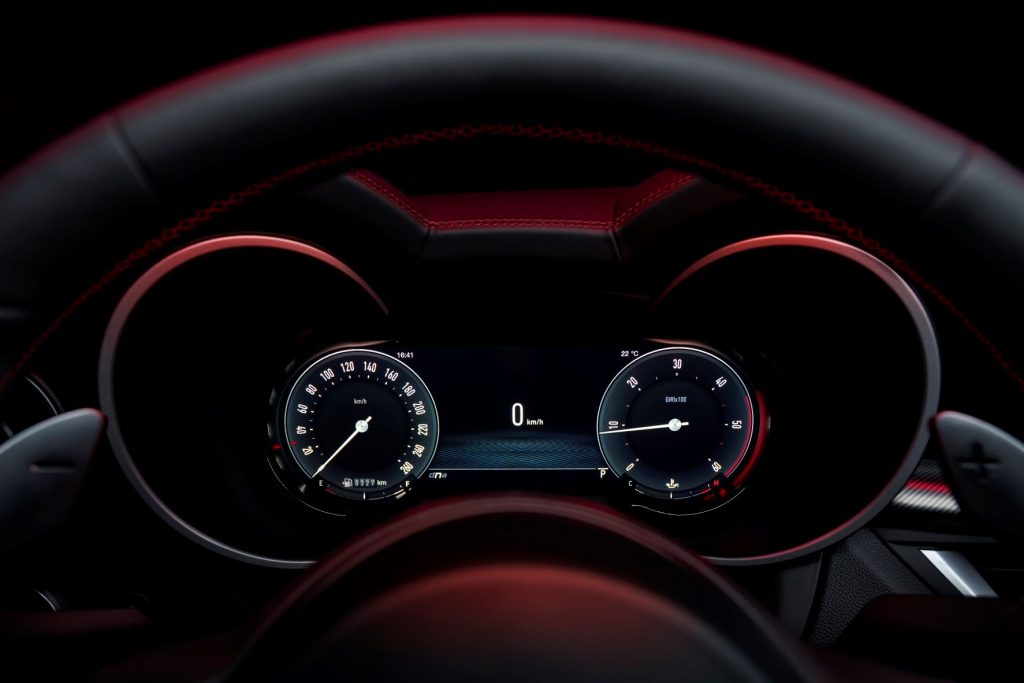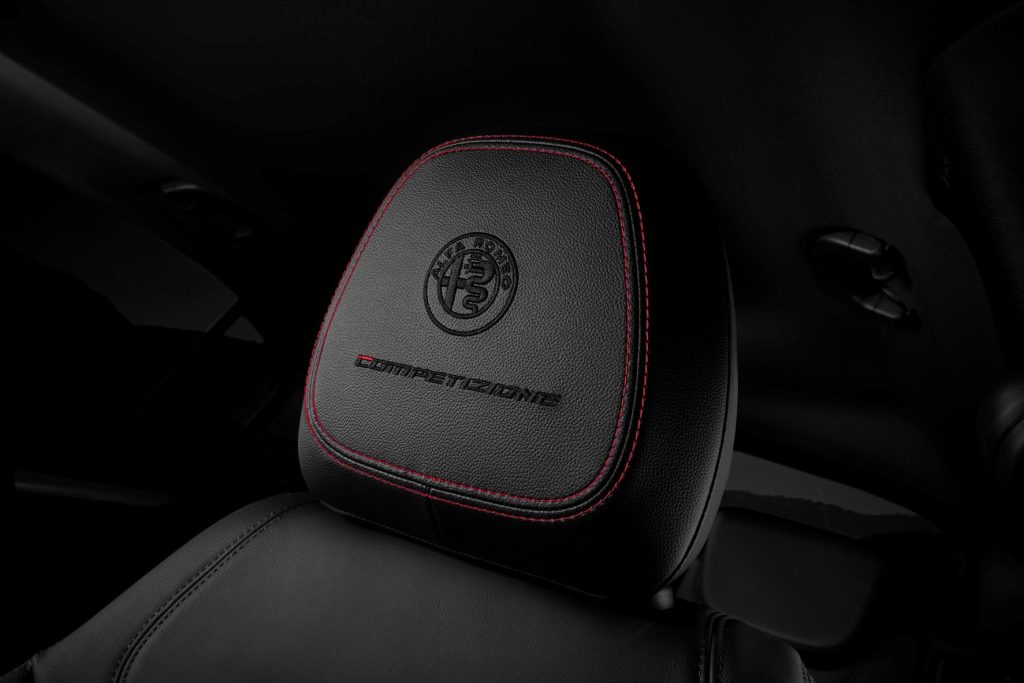Chris Riley tests the 2022 Alfa Romeo Stelvio Veloce with pricing, specs, ride and handling, safety, verdict and everything the over-50 driver needs to know.
Summary: The Alfa Romeo Stelvio is an SUV based on the mechanicals of the Giulia. It’s heavier and higher, so not as much of a driver’s car. But for many people, the Alfa Romeo badge will be sufficient to swing the deal.
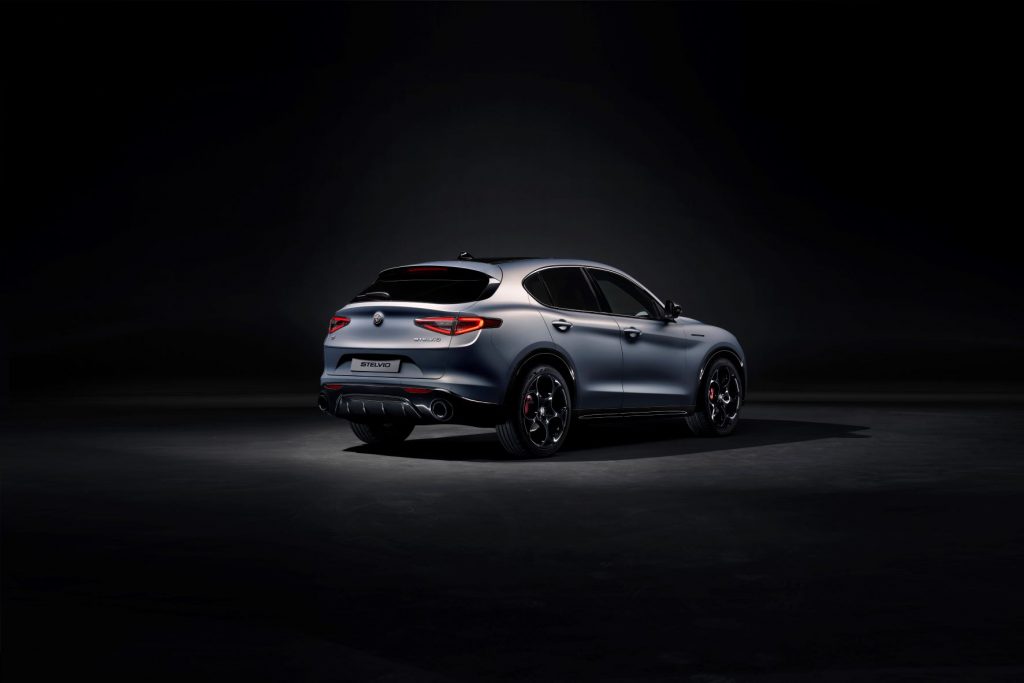
2022 Alfa Romeo Stelvio Veloce SUV
Pricing: $79,450 (range from $64,950 to $153,500, all plus on road costs)
Warranty: Five-years, unlimited km
Safety: 5-star ANCAP (tested 2017)
Engine: 2.0-litre turbocharged four-cylinder petrol engine
Power: 206kW at 52500rpm
Torque: 400Nm at 2250rpm
Transmission: 8-speed automatic, all-wheel drive
Body: 4687mm (long); 1903mm (wide); 1648mm (high)
Weight: 1660kg
Towing capacity: 2000kg
Wheels: 20-inch alloy
Tyres: 255/45R20
Ground clearance: 190mm
Wading depth: 480mm
Turning circle: 11.7m
Fuel tank: 64 litres
Thirst: 7.0L/100km (unleaded 95 RON)
Consumption on test: 8.6L/100km (over 1000km)
seniordriveraus consumption on test: not tested
[review]
It seems so long ago now that Porsche added the Cayenne to the mix, a Porsche that was not only quick but easy to get in and out of thanks to its increased ride height.
Did in fact the world need a Porsche SUV? Buyers thought so, as baby boomers flocked to the Cayenne, followed soon after by an economical – gag, cough, splutter – DIESEL version.
Purists were aghast, but the number of sports SUVs has multiplied like rabbits across the brands since those days, and now stretches all the way to the lofty heights of the Rolls-Royce Cullinan.
But it behoves us to pause and wonder, not for the first time, if the world needs an Alfa SUV. Or, for that matter, Ferrari SUV, with the Maranello car maker poised to drop the Purosangue soon – try saying that after you’ve had a few.
The figures speak for themselves. Alfa has sold 126 Stelvios so far this year; not that many but it’s now Alfa’s best-selling model in Oz – so the answer would seem to be yes.
What’s it cost?
The front is classic Alfa with its prominent, predatory, triangular grille, together with black trim, fat exhaust outlets and black 20-inch rims with red brake calipers peeping out.
The term ‘classic’ returns to mind when it comes to the interior, with its analogue dials, driver-focused dash, aluminium trim inserts and heavily bolstered sports seats.
You’ll find the start button located on the steering wheel and another one labelled DNA, which provides access to three drive modes, along with another less conspicuous button in the console that can be used to soften the ride in Sport mode.
DNA stands for Dynamic, Natural and Advanced efficiency, in other words Sport, Normal and Eco, with Dynamic mode delivering sharper brake and steering feel with more aggressive engine, transmission and throttle tip-in calibrations
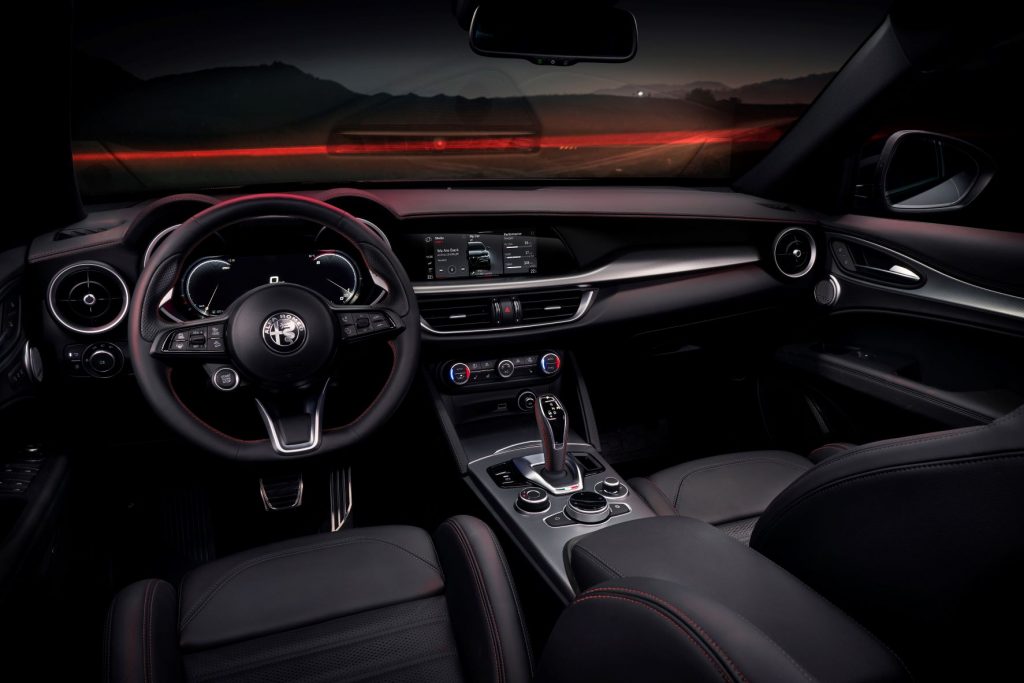
There are four grades from which to choose, starting with 147kW Stelvio from $64,950 (available by special order only).
For $5000 more, you get the Sport, also with 147kW and priced from $69,950. Then comes our test vehicle, the 206kW Veloce, priced from $79,450.
At the top of the tree sits the Quadrifoglio, priced from a nose-bleed-inducing $153,500. Justifying its price is 375kW twin-turbo V6 and mouth-watering zero to 100km/h time of just 3.8 seconds.
Standard kit includes Alfa DNA Drive Mode, dual climate control, heated leather sport steering wheel, leather sports seats with power adjust bolsters, along with aluminium pedals, shift paddles, with aluminium dashboard, tunnel and centre console inserts.
There’s also sporty red brake calipers, push button start on steering wheel with keyless go, auto headlights and wipers, auto dimming rear view mirror, front and rear parking sensors, and 35W bi-xenon headlights with auto high beam and an adaptive front lighting system (AFLS).
As well as more power and torque, Veloce adds a limited slip rear diff, active variable suspension, beefed-up brakes and 20-inch aluminium alloys.
There’s also a sports body kit, dual exhausts and a hands-free tailgate.
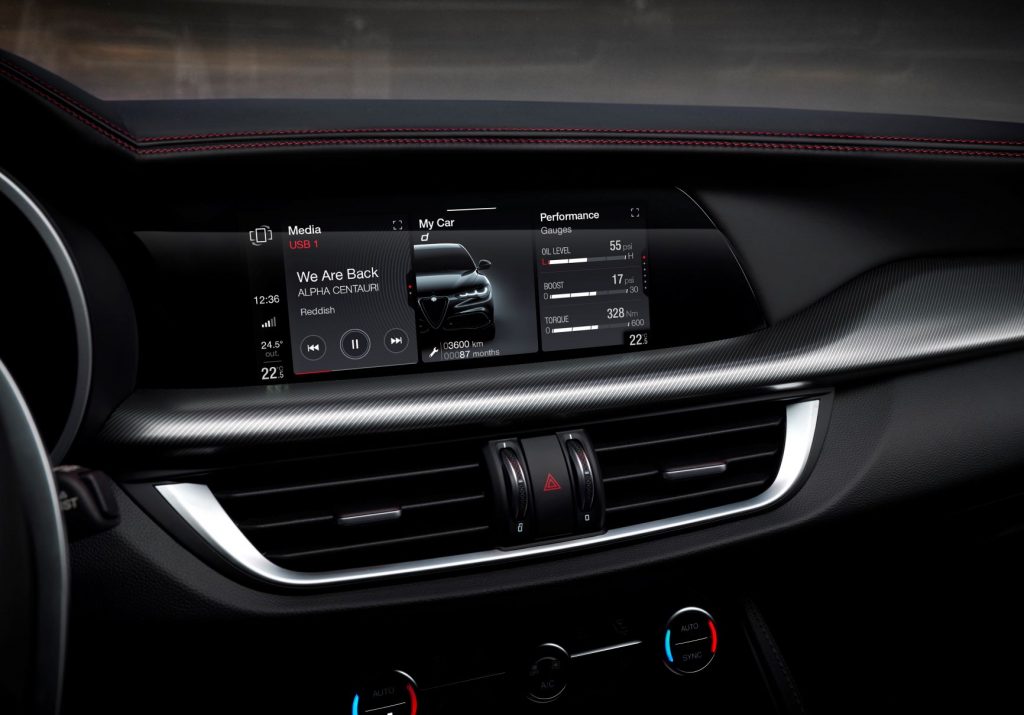
Inside you’ll find ambient lighting, stitched leather dashboard and door trim, 8-way power adjustable front seats and heated rear seats.
Infotainment consists of an 8.8-inch touchscreen, with 3D Navigation, 10-speaker, 400-watt sound system, with subwoofer, AM/FM and DAB+ digital radio, plus Apple CarPlay and Android Auto smartphone connectivity.
It can be controlled from the screen, a rotary selector or advanced voice recognition system.
There is one front, two centre and one rear USB port, along with wireless phone charging.
Five-star safety includes six airbags and autonomous emergency braking, with forward collision warning.
There’s also driver attention alert, rear-view camera with dynamic guidelines, active blind spot assist, lane keep assist and blind spot monitoring with rear cross path detection.
Service intervals are 12 months/15,000km, with a five-year/75,000km capped-price service plan that totals $2865.
What’s it go like?
Although it looks around the same size as Australia’s best-selling SUV, the Mazda CX-5, the Stelvio is actually slightly larger – 137mm longer overall with a wheelbase longer by 118mm.
That means more room inside, in theory at least. Of course, it’s what you do with that extra space that counts.
Rear legroom is still a bit tight for our liking.
The 2.0-litre turbocharged petrol engine produces 206kW of power at 5250 revs and 400Nm of torque, the latter from 2250 revs.
Drive is to all four wheels through an eight-speed traditional automatic, with over-sized aluminium column-mounted gear change paddles that make manual shifting extremely easy.
Although it’s all-wheel drive, the system is biased towards the rear wheels to give the Stelvio a sportier feel, with a limited slip rear diff that transfers drive between rear wheels.
The powertrain is shared with the Giulia sedan, but because the Stelvio is larger and heavier, it’s not quite as punchy – not that you’d notice.
Top speed is 230km/h and it does the dash from 0-100km/h in a brisk 5.7 seconds.
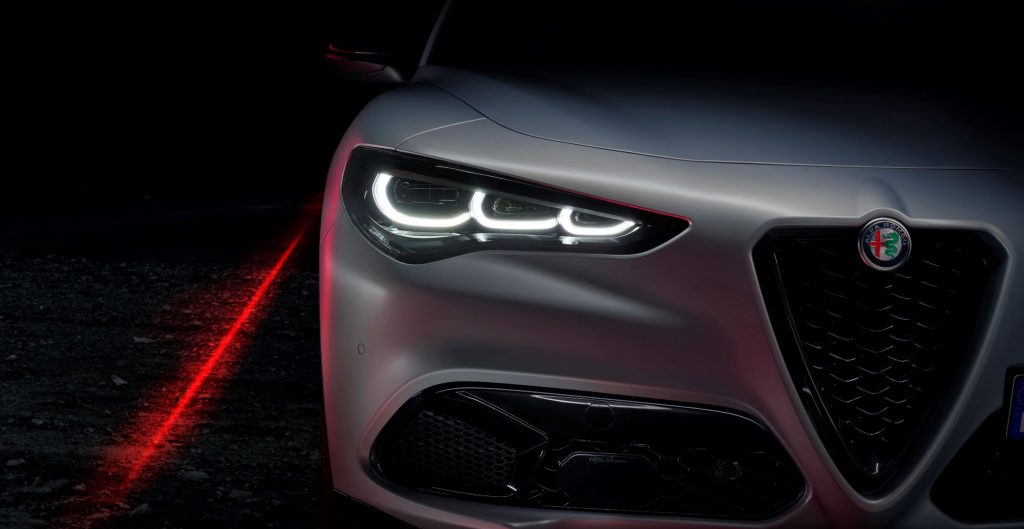
Being a high-riding SUV, there’s more body roll than a sedan, too. The trick is to reduce that roll as much as possible.
The resulting ride quality is okay, but can be jarring at times, especially when it encounters potholes, speed humps and some of our second-rate roads.
Surprisingly, there’s no head up display and the instrumentation is a bit, well . . . dated.
Two standard analogue gauges flank a small central driver display, without any of the pyrotechnics of a fully digital cluster that is fast becoming the norm.
I imagine the Italians dismiss this as irrelevant. It’s how the car looks and performs that is most important after all.
I kept looking for any mention of LED lighting, either inside or out, and found none which is unexpected. Bi-xeno, yes – but they are so last season.
There’s three drive modes: Dynamic (D), Normal (N) and Advanced efficiency (A) – hence D-N-A.
As mentioned, in Dynamic or sport mode, it is possible to dial up softer suspension, but surprisingly the ride is worse – so we left it where it was.
On first impression the 206kW turbo provides easy, effortless acceleration, but the ride is fidgety, fussing all the time instead of settling down, and the steering requires constant and undivided attention.
Take your eyes off the road for a moment and the car is likely to go walkabout.

The eight-speed auto is spot-on most of the time, with slick timely changes and those big paddles if you want to do it yourself.
But changing between forward and reverse can be tricky if you’re in a hurry.
Pull the shifter towards you and remember to put your foot on the brake while doing so, otherwise it just won’t work. It’s easy to get mixed up.
The brakes are generally more than adequate, but lack some bite if you start pushing hard.
Remember though nobody is likely to drive it this way. You don’t want to make the kids in the back sick. Slow down Dad!
Unlike most cars these days, the touchscreen is integrated into the dash, a style I personally prefer as it’s more practical.
A generous boot comes with a 12V power outlet for the fridge, luggage net and adjustable tie-down rails, with a space saver spare tucked under the floor.
Rated at 7.0L/100km, we were getting 8.6L after just over 1000km including a run from Sydney to Canberra and back, and it takes 95.
What we like
- Looks the goods
- Draws admiring glances
- Good fuel economy
- Strong performance
- Rear air outlets
- It’s an Alfa
What we don’t like
- Abrupt brakes
- Jerky throttle
- Annoying gear selector
- Old-style instrumentation
- No head-up display
- Poor rear-view camera
- Cramped back seat
- Space saver spare
What over-50s need to know
Like most Alfas, life with the Stelvio is something of a love-hate relationship.
It’s a head turner and it’s pretty quick off the mark, and it can carry a family in reasonable comfort.
For many that and the badge will be enough, but there’s room for refinement.
The ride is jerky, the steering touchy and so are the brakes, while the infotainment system doesn’t really cut it compared to others.
The good thing, however, is that Alfas come with a decent warranty these days which makes buying one of the cars much less of a gamble.
You’ll be the envy of all your friends!
seniordriver comments
We continue to be bemused by the appeal of sporting SUVs, but looking at the sales figures, (and Alfa’s Stelvio is its best-selling model in Australia), it appears we’re simply out of touch.
Alfa Romeo has always appealed to committed drivers, most of whom were willing to forgive it almost any shortcomings. So it makes some sense that if you must have an SUV, an Alfa Romeo has some appeal.
As we found with the Giulia, prices start at a reasonable $64,950 and then rise rather steeply to $153,500, so there should be a model to suit most budgets (so long as your budget starts close to $70,000!)
The slightly fidgety ride (and need for constant steering inputs) mentioned by Chris are a cause for some concern – there’s quite enough to concentrate on when driving without have to bring a car back on line. It may be a function of the higher ride height and higher weight over the Giulia – it’s not something we noticed when driving the Giulia.
The need to apply the brake before selecting reverse is one of those annoying “nanny” interferences that is becoming ever more common in modern cars (we particularly disliked the Hyundai Palisade’s symbol on the dash to warn you that you’re approaching a bend … if you can’t see that, you shouldn’t be driving).
